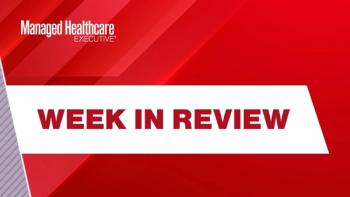
FDA OKs First-of-its-Kind Treatment for Rare Form of ALS
The list price for Qalsody, the first and only approved treatment to target a genetic cause of ALS, may prove to be controversial.
FDA approved Biogen and Ionis’s Qalsody (tofersen) to treat patients with amyotrophic lateral sclerosis (ALS) associated with a mutation in the superoxide dismutase 1 (SOD1) gene (SOD1-ALS).
But the list price for Qalsody, the first and only approved treatment to target a genetic cause of ALS per Ionis, may prove controversial. The drug is an antisense oligonucleotide that targets SOD1 mRNA to reduce the synthesis of SOD1 protein.
The accelerated approval was based on a reduction in plasma neurofilament light (NfL), a blood-based biomarker of axonal (nerve) injury and neurodegeneration, the FDA
“For more than a decade, Biogen has been steadfast in our commitment to pursuing treatments for ALS, and I want to thank the scientists as well as the entire ALS community who have worked tirelessly to bring this first-of-its-kind treatment to people with SOD1-ALS,” Christopher A. Viehbacher, president and CEO of Biogen, in a statement provided to Formulary Watch.
The approval marks a “pivotal moment” in ALS research, “as we gained, for the first time, consensus that neurofilament can be used as a surrogate marker reasonably likely to predict clinical benefit in SOD1-ALS,” Veihbacher added. “We believe this important scientific advancement will further acerbate innovative drug development for ALS.”
SOD1-ALS is a “devastating, uniformly fatal and ultra-rare genetic form of ALS with approximately 330 people in the U.S. living with the disease,” Chris Leibman, senior vice president of value, access, public policy and government affairs at Biogen, told Formulary Watch. “It can advance quickly and can have a devastating impact on families for generations.”
Qalsody will be priced “within a range comparable to other recently launched ALS treatments,” Leibman said. "We believe this strikes the right balance between the scientific and clinical innovation Qalsody delivers with the need to get this treatment to patients as quickly as possible.”
The treatment’s price will be public within 24 to 48 hours and available in various pricing compendia such as the
Amylyx Pharmaceuticals’ Relyvrio (sodium phenylbutyrate/taurursodiol), another ALS therapy, sparked pricing controversy with its $158,000 wholesale acquisition cost (WAC) when it was
Relyvrio’s list price is much higher than that recommended by the
“We think it is also important to look at this in comparison to other recently approved treatments for other ultra rare diseases, where price ranges have been much higher,” Leibman said.
Biogen considered “important factors” in determining the price of Qalsody, including the value it provides patients and their caregivers based on the treatment effect demonstrated in clinical trials, the value of breakthrough approaches to genetic diseases with no treatment options, and the need to incentivize innovation for small patient populations that might otherwise be overlooked, Leibman said.
The average life expectancy for people with ALS is three to five years from time of symptom onset and life expectancy in SOD1-ALS varies widely with some patients surviving less than a year, he added.
Qalsody will be made available to ship to healthcare providers in approximately one week, according to Leibman. “Biogen anticipates there may be variation in time to treatment as institutions and treatment centers learn about Qalsody,” he noted.
The effectiveness of Qalsody was evaluated in a 28-week, randomized, double-blind, placebo-controlled clinical study in 147 patients with weakness attributable to ALS and a SOD-1 mutation confirmed by a central laboratory.
Patients receiving Qalsody had nominally significant reductions in plasma NfL concentration at Week 28 compared to the placebo arm, according to the FDA.
The findings are “reasonably likely” to predict a clinical benefit in patients, the agency added. The observed reduction in NfL was consistent across all subgroups based on sex, disease duration since symptom onset, site of onset, and use of other medications for ALS treatment.
In the overall intent-to-treat population, Qalsody-treated participants experienced a 55% reduction in plasma NfL compared to a 12% increase in placebo-treated participants. Additionally, levels of CSF SOD1 protein, an indirect measure of target engagement, were reduced by 35% in the Qalsody-treated group compared to 2% in the corresponding placebo group, according to Ionis.
Qalsody was also associated with a non-statistically significant trend towards reduction of the risk of death or permanent ventilation. “These exploratory analyses should be interpreted with caution given the limitations of data collected outside of controlled study, which may be subject to confounding,” Ionis said.
Qalsody is administered intrathecally (through a spinal injection) by healthcare professionals who are experienced in performing lumbar punctures. The recommended dosage is 100 mg (15 mL) per administration, the FDA said. Patients receive three initial doses administered at 14-day intervals, followed by a maintenance dose every 28 days.
Warnings and precautions associated with Qalsody were serious neurologic events, including myelitis and or radiculitis; papilledema and elevated intracranial pressure; and aseptic meningitis, according to Ionis. The most common adverse reactions that occurred in ≥10% of Qalsody-treated participants and more than the placebo arm were pain, fatigue, arthralgia, CSF white blood cell increased, and myalgia.
Newsletter
Get the latest industry news, event updates, and more from Managed healthcare Executive.

















































